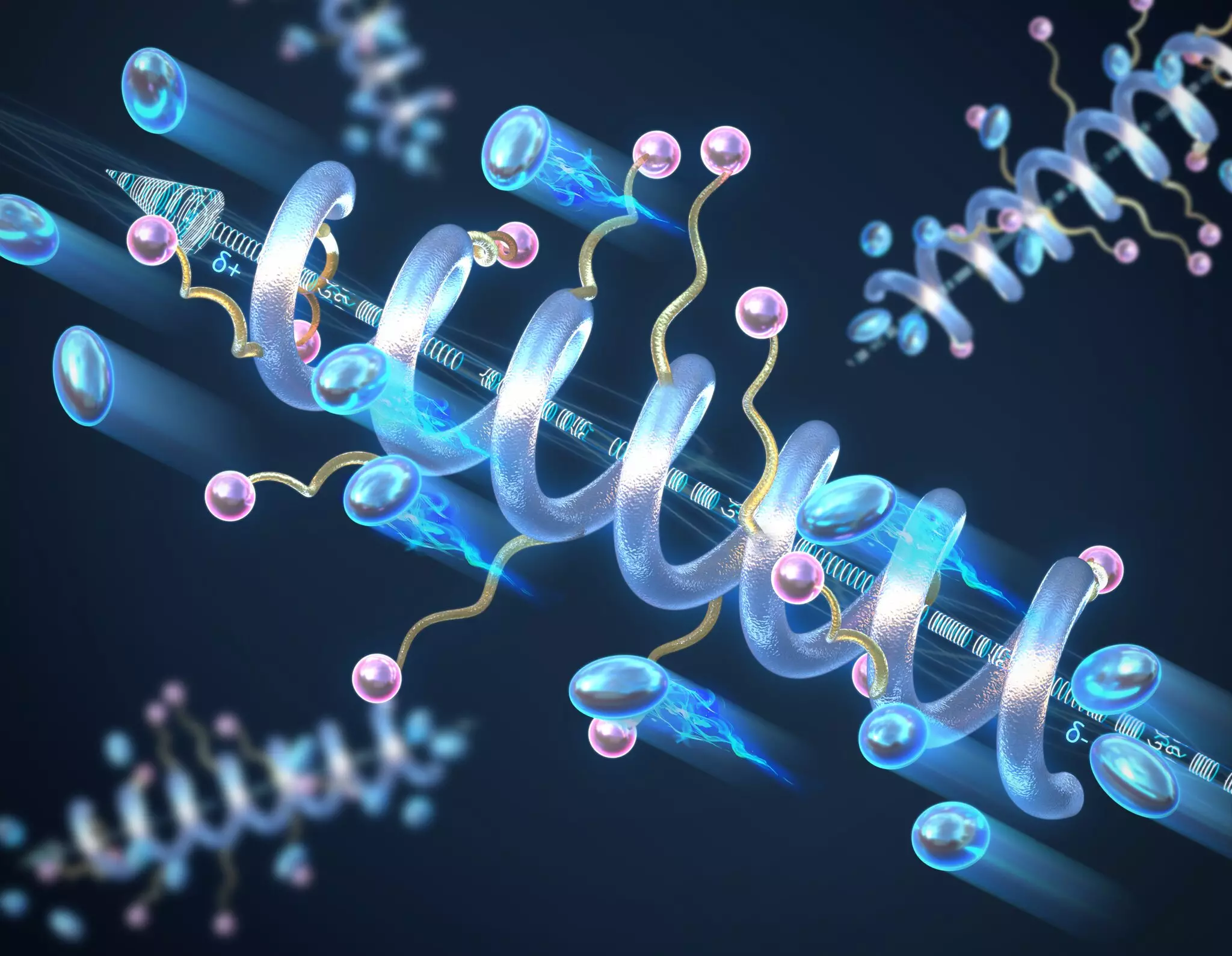As the world moves towards renewable energy sources and electric vehicles, the demand for more efficient and safer energy storage technologies has never been greater. Traditional batteries, which commonly use liquid electrolytes, present significant risks such as leakage, flammability, and thermal instability. Consequently, solid-state batteries have emerged as a compelling alternative, offering enhanced safety and stability. However, the path to realizing their full potential relies on innovative advances in material science, particularly in the development of more effective solid-state electrolytes.
In this context, researchers at the University of Illinois Urbana-Champaign have taken a bold step forward by exploring solid-state peptide polymer electrolytes. Their groundbreaking research highlights that the helical secondary structure of these materials can vastly improve ionic conductivity, a crucial factor in energy storage performance. Unlike conventional polymers that often remain in a disordered state, these peptides are uniquely designed to form a well-ordered helix, akin to DNA. This structural innovation lays a foundation for more efficient charge transport—essential for any battery technology.
The merits of adopting helical structures stem from their inherent properties. In the study led by Professor Chris Evans, it was revealed that the helical arrangement not only boosts conductivity but also enhances the overall stability of the polymer electrolyte against thermal and electrical stresses. This indicates that longer helical structures correlate with even higher conductivity levels, highlighting a clear design pathway for future materials.
The mechanism behind this enhancement is compelling. The helical structures create what’s known as a macrodipole moment, which facilitates significant charge separation along the polymer chain. Consequently, this results in a more efficient accumulation of charge carriers, which improves the ionic mobility within the solid-state configuration. This is a transformational concept that challenges the traditional paradigm where random coil configurations—often associated with lower efficiency—dominate the polymer landscape. The work of Evans and his team introduces an innovative perspective on material design, bringing together principles of chemistry, biology, and physics to engineer superior performing batteries.
Stability is a vital consideration in the development of energy storage materials. The solid-state peptide polymer electrolytes have shown a remarkable ability to withstand elevated temperatures and voltages without degradation. In practical terms, this means longer battery life and reliability under various operating conditions. Evans remarked, “You can go to high temperatures or voltages compared to random coil polymers, and it doesn’t degrade or lose the helix.” This resilience provides significant advantages for applications where temperature fluctuations can be an issue, such as in electric vehicles and renewable energy storage systems.
Moreover, sustainability is a pressing concern in battery technology. The biodegradable nature of these peptide materials adds a layer of appeal, especially in an era increasingly focused on reducing environmental footprints. After a battery reaches the end of its lifespan, the peptides can be broken down into their monomer units through environmental means like enzyme or acid treatment. This capability not only facilitates the recovery of raw materials but also reduces waste, making these solid-state batteries a more environmentally responsible choice.
The research conducted by the University of Illinois Urbana-Champaign showcases a critical intersection of material science and energy technology. By leveraging the unique properties of helical secondary structures in peptide polymer electrolytes, they have set a new standard for future developments in solid electrolyte materials. As the demands for safer, more efficient energy storage solutions continue to grow, such innovative approaches may well define the next generation of battery technology. With the dual benefits of enhanced conductivity and sustainable design, the helical peptide polymers open up exciting avenues for research and application, ushering in a new era in energy storage systems. The journey to more advanced power sources seems promising, and as we stand on the brink of this frontier, one can only imagine the myriad possibilities that lie ahead.


Leave a Reply